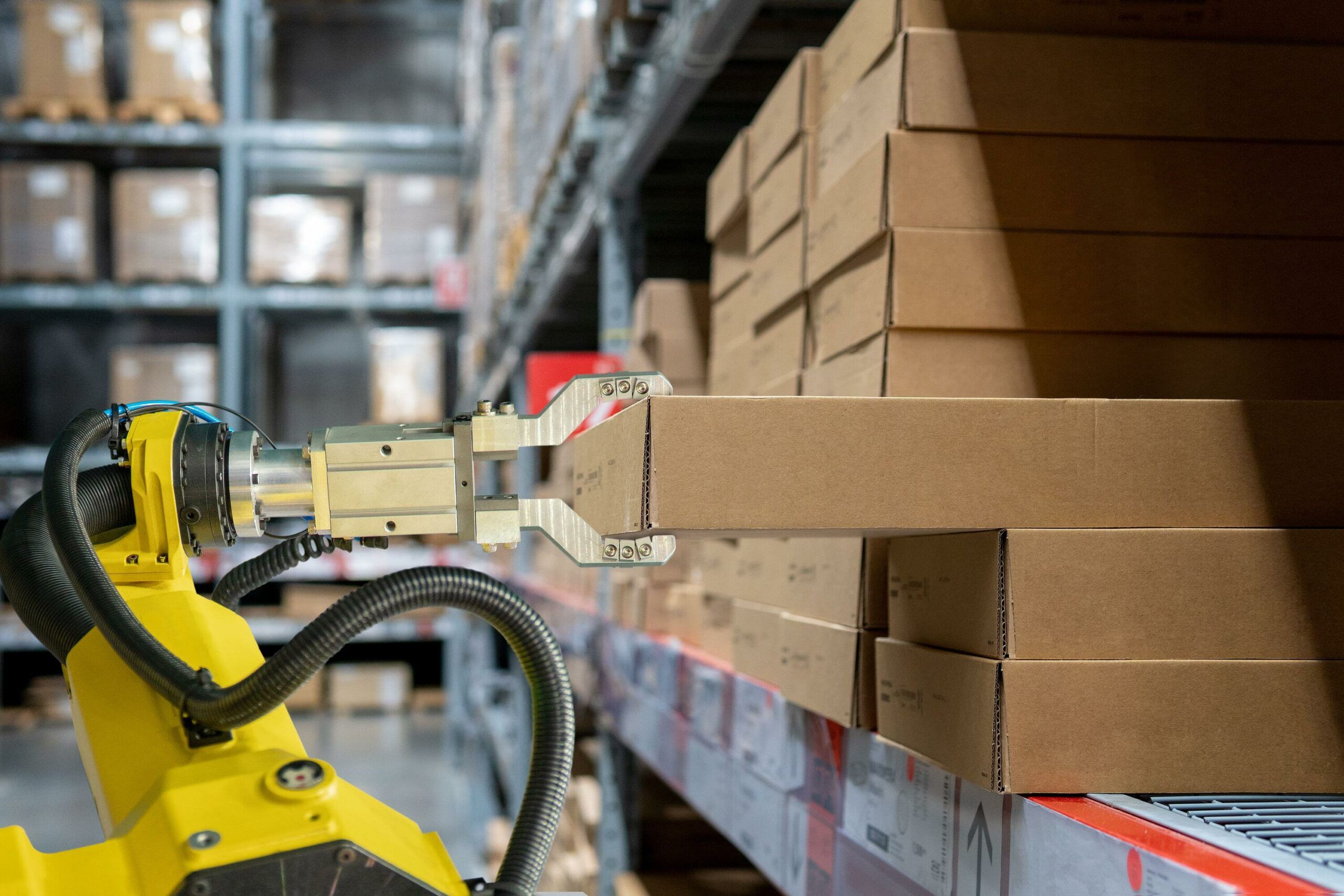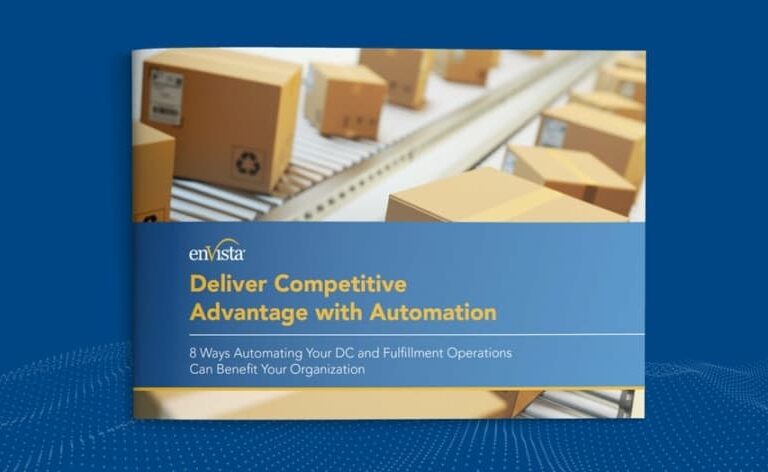Fully automated warehouses can be a taboo subject, since jobs performed by robots inherently cannot be fulfilled by people. However, today’s low unemployment rate indicates the difficulty companies are having finding workers for certain warehouse jobs and creates a prime opportunity for warehouse automation. A dark warehouse does sound like a dream scenario for supply chain executives: high productivity without the ancillary costs associated with a human workforce.
With ecommerce, more customers are shopping online and having items shipped directly to their homes or a store nearby. These customers expect their orders to arrive more quickly than ever before, driving the need for streamlined and constant productivity in warehouses. Because of this, and despite the high upfront costs, dark warehousing is increasing in popularity.
Table of contents
What Is a Dark Warehouse?
A dark warehouse is a warehouse that has been fully automated to operate with no human input needed. Left alone with the lights out, the dark warehouse continues to run operations independent of human labor. The bulk of work in dark warehouses is done using fixed and mobile robots and completely automated systems.
A dark warehouse goes beyond a simple goods-to-person automated storage and retrieval system (ASRS). It also includes material handling equipment, self-guided forklifts, vision-guided robots, robotic palletizers and high-speed conveyor systems.
In most automated warehouses, the main task is carrying shelves of products to a human worker who then picks items from the shelves to pack for shipment. The next step is to automate the picking process entirely.
How do Dark Warehouses Work?
Dark warehouses depend on a tightly integrated technology ecosystem. Software like warehouse management systems (WMS), warehouse control systems (WCS) and/or warehouse execution systems (WES) work behind the scenes to coordinate the movements of the robots and track inventory in real time.
Goods are stored in Automated Storage and Retrieval Systems (ASRS) that automatically retrieve items for orders. Robotic arms or pick-and-place systems handle individual products, while conveyor belts or AMRs transport items between stations. Vision systems and machine learning ensure accuracy, and IoT sensors collect performance data for continuous improvement.
These systems communicate across data networks, enabling predictive maintenance, order prioritization, and 24/7 operation with near-zero downtime.
Advantages of a Dark Warehouse
Robotic workforces have many advantages that are reshaping warehouses and distribution centers:
- Scalability: Automated systems can scale easily to handle seasonal volume spikes or business growth with minimal reconfiguration.
- Labor efficiency: Automation reduces dependency on manual labor for taxing or tedious tasks. This is particularly beneficial amid ongoing labor shortages.
- Operational continuity: These warehouses can operate around the clock, maintaining consistent throughput levels, without breaks, shift transitions or natural fatigue.
- Error reduction: Robotic systems are highly precise, minimizing picking and packing errors and improving customer satisfaction.
- Cost control: While upfront investments are high, the long-term savings in labor, energy and reduced waste are significant.
Disadvantages of a Dark Warehouse
Despite their benefits, dark warehouses come with notable challenges:
- High cost: Dark warehouses require a significant upfront capital investment, unlike labor costs which are paid in smaller increments over time. The upfront cost of robotics, IT systems and retrofitting can be a limiting factor.
- Operational limitations: The higher the complexity of a process, the higher the cost of an automated process.
- Technical complexity: Designing and managing these systems demands specialized expertise in automation and data integration.
- Cybersecurity concerns: Increased reliance on digital systems raises the risk of cyberattacks and will require robust security measures to keep your data and operations safe.
- Limited flexibility: Fully automated setups may struggle with handling exceptions or products that require human discretion or customization.
- Maintenance dependency: Robots and systems need regular maintenance, and any system failure can bring operations to a halt.
Is a Dark Warehouse Right for Your Business?
A dark warehouse model works best in facilities where human workers are moving large quantities of the same types of objects repeatedly, as well as for cold storage or freezer warehouses where temperature control is a key factor. For this reason, dark warehouses are commonly used in the food and beverage and pharmaceutical industries.
If you think a dark warehouse might benefit your organization, take these considerations into account:
- Order volume and demand predictability
- Ensure there is sufficient and consistent order volume to justify the high upfront automation investment. Highly variable or seasonal demand may require hybrid automation strategies instead.
- SKU diversity and picking complexity
- Assess whether your product mix is compatible with fully automated picking systems. High SKU variability or irregular item dimensions may introduce automation challenges that impact efficiency or ROI.
- Long-term cost-benefit analysis
- Go beyond upfront capital expenditure to evaluate total cost of ownership, including maintenance, software, energy usage and labor offsets. Project expected ROI based on throughput, accuracy gains and labor savings over time.
- Internal or partner automation expertise
- Evaluate whether your team has the technical capabilities to manage and maintain a dark warehouse, or whether you will rely on third-party integrators, which can affect cost, flexibility and support.
- Scalability and future growth
- Consider how the automated system can adapt to future business needs, such as expansion into new markets, increased order volume or changes in product mix, without requiring full reinvestment.
For companies handling high volumes of repetitive tasks with room for investment, dark warehousing offers significant long-term returns.
Ready to Implement a Dark Warehouse?
The path to a dark warehouse is first reliant on the implementation of these three things:
- Automated Storage and Retrieval Systems (ASRS)
- High-speed sorting equipment
- Warehouse robotics
ASRS are “lights out” by design, since there is no room for collaboration with a human operator. These work best in distribution centers that handle high volumes of inventory moving in and out of storage. Best-of-breed ASRS solutions can sort, sequence and bugger goods for tasks such as picking, order fulfillment and temporary or long-term storage. High-speed sorting equipment, including robotic arms, can operate independently of human intervention and get the goods where they need to be.
Recent innovations have created a mobile robotic workforce that is more likely to drive the warehouses of the future. Using wireless instructions from a WMS or WES, these robots can transport pallets and cases of goods throughout the warehouse. While we are still far from dark warehousing becoming the norm, it is best to start considering the possibility. With rapid technological advancement, it likely will not be long before lights-out facilities become more and more prevalent.
Implement Dark Warehouse Operations with enVista
Learn how enVista’s warehouse design team can help your organization strategically leverage dark warehouse automation and other warehouse automation solutions for a competitive advantage across your warehouse operations.
enVista can support everything within the four walls of the warehouse, from systems like warehouse control systems, labor management, warehouse management and storage to facility design, operations assessments and more.





